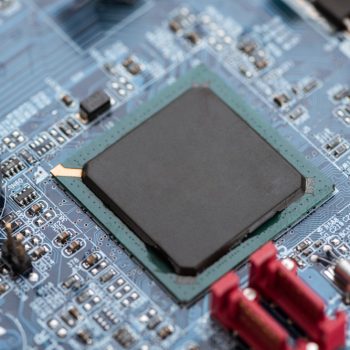
Like most startups that begin the journey being bootstrapped, hardware and IoT startups face greater challenges as compared to software startups. Launching hardware and IoT products is not only time and resource consuming, but can sometimes require a learning curve that tests the startup’s adaptability to changes in technology.
We know that building a physical item, unlike working on a software solution, brings more challenges, as discussed in our previous article here. Therefore, professional guidance is crucial for many engineers when deciding on further actions for their project. One software tool to consider is the ANSYS Startup Program, which offers eligible hardware startups access to the world’s leading engineering simulation software.
In this article, we cover best practises for hardware startups that can be beneficial not only for brand new enterprises but also for companies that are stuck in the middle of the process.
Here are the most common pieces of advice offered in our pitching events:
Pitch and consider feedback
Pitching is a skill that takes practice, and generally happens in front of an unknown audience that will judge the startup critically. Thus, preparation is necessary. In our previous blog we have shared some recommendations on how to pitch your hardware and IoT startup so you can arrive for pitching events well prepared. Such events are big moments that provide benefits in many ways; you are not just marketing your idea but improving your pitch and eliminating your blind spots.
Weaknesses are common, and they are usually obvious to everyone except you; thus, by sharing your idea, people can help you pinpoint flaws. Remember that you will have to pitch your idea numerous times to various people and each time they will have something to say. Celebrate compliments but do not turn your back to relevant feedback that could improve the product and the development process.
Pitching is a way to market your idea and reach potential investors or even new customers. If a reporter thinks your pitched startup is worthy of attention, the possibility of being covered in tech blogs, websites, and magazines is high. Your presentation should be simple, clear, and keep everyone focused. Consider who your audience is and prepare accordingly.
We know that hardware startup pitching events are not as common as those for software startups. For this reason, StartupBlink hosts a monthly Hardware Startup Pitching online event to provide a platform for you to pitch your hardware and IoT startup and get advice from world-class hardware experts, along with the opportunity to be featured on our top-rated blog, newsletter, and social media channels. Register for our pitching event here, and your hardware startup may be selected to pitch in front of a global audience.
Importance of startup ecosystem in your city
Your city’s startup ecosystem directly affects the success of your hardware and IoT startup. The ecosystem involves people, startups in their various stages of development, and organizations that support their activities. They all interact as a system to create new startup companies. By placing yourself in a startup hub, you get access to valuable resources, such as connections with other startups, investors, governmental institutions, and related events.
Some cities have well developed startup ecosystem hubs with all the necessary resources, while others are still striving to build one. Startupblink has presented a Startup Ecosystem Rankings Report that takes 954 cities and 125 countries around the world into consideration. According to the research, the best 3 startup ecosystem countries are the United States, UK and Canada, while San Francisco, New York, and London hold the top 3 city rankings. Wondering where your country and city are located in the startup ecosystem report? You can download the research here and see how well they rank globally.
Understanding the position of your city in the startup ecosystem ranking can help you make strategic decisions. Where you are matters a lot; if you are not in a good location, you could either relocate yourself to a better startup hub or work to actively improve your local ecosystem.
What are your hardware startup needs
As a founder, you have to comprehend your company’s needs to move forward. Identify the goals of your project; whether it’s investment to start and scale, a strategic partnership, sales, or any other issue you need to deal with in the near future. It is important to determine these needs so you and your team are on the same page instead of everyone firing off on a different trajectory.
Once objectives are determined, create a plan on how to achieve them. The plan has to be realistic.Consider all the possible advantages and disadvantages while keeping in mind that unplanned events will occur. Do not be afraid to take risks, but at the same time be humble and acknowledge the things you do not know, then seek expert help. Consulting the right people can be quite an eye-opening experience, giving you different points of view to take into consideration and helping you take the next step toward improvement.
Remember, the startup scene is dynamic and changes are common. Therefore, you have to be quick enough to adjust your business accordingly in a limited period of time. Never waste a second, whatever your need is, and make sure you and your team are focused on reaching your goal.
You cannot do it all alone
Seeing the path to success as a group effort rather than an individual achievement strengthens your project in many ways. Hardware founders are known for their hands-on attitude, but the number of tasks to handle is usually higher for hardware vs. software solutions. And that is where a couple of extra hands can be useful.
As soon as you see that 24 hours is not enough to accomplish all the assignments of the day, get yourself a co-founder with a complementary skill set who can compensate for the abilities you lack. You can use coworking, networking events, or join a community to share your journey with others.
Given that hardware startup projects have the ability to attract, support, and enable numerous people with different skills and ambitions, you might want to back yourself up with not just one but several team members. This way, your small but still important tasks will be taken care of and you will be able to concentrate on more urgent developments and connections.
Milestones first
Another thing to note is that people willing to invest in your idea usually arrive later on in the process. It is not by coincidence that investors prefer supporting projects that already have milestones achieved rather than those that have only an idea, since the investor’s assets are at risk. Even a small number of milestones achieved can mean the difference between receiving funding and being disappointed.
Let your potential clients and investors know what has already been done, and share every milestone your company has reached, even if they don’t seem that impressive to you. By doing so, you let investors know that you have a worthwhile idea, and you are executing it. Ideas for investors are irrelevant; they need tangible achievements to measure your potential.
We understand that the importance of achieved milestones at the early stage could be hard to evaluate; and even harder to decide if they are worthy of mention. Here are some of the examples of milestones you can share:
– We have a working prototype.
– Here is a demo I can show you right now.
– X amount of people already bought the product on crowdfunding campaigns.
– Got accepted to a corporate program or high quality accelerator.
– Got initial seed money from…
– We have registered a patent.
– We are working together with a corporation to build our first units.
– Previous track record of one of the founders in building a successful company.
Accelerators
Hardware startups can be more difficult than software solutions due to higher consumption of resources and longer time to develop working products. Accelerators can be a great solution for an early stage startups since, in addition to financial support, they provide mentoring, access to resources, and valuable investor networks. By joining the right accelerator program, founders have the opportunity to speed up the development of their business. Some of the best accelerators are featured here.
Choosing a suitable accelerator for your hardware startup might require you to be more vigilant, as it is important that your accelerator aligns with your business philosophy. We have already discussed how to select the right accelerator and the impact this choice has in our previous article. Some good parameters to check before making a choice: do they align with your goals, do they have great mentors aboard, what level of equity do they need, what are their areas of expertise, and what is their previous track record.
Not all accelerators will fulfil the specific requirements of your hardware and IoT startup. It could happen that at the end of the program, you will feel as if you have only wasted your time. To avoid this, you might want to research relevant accelerators and gauge their experience in working with hardware solutions before making any commitments.
Corporates (B2B)
Active collaboration between startups and corporations is crucial for boosting innovation. Such relationship can benefit both sides, helping startups to develop their products and scale while assisting corporations to enter or create new markets. For these reasons, a hardware and IoT startup founder might want to consider collaboration with a larger corporation.
While startups are faster and more innovative in their ideas, approaches, and technologies, corporations offer much needed financial resources and connections. Having such strong back up would instantly grant your startup a glowing validation of trustworthiness and quality among future investors and clients.
Despite the fact that both startups and corporations, share the same strategic goals, like growing their companies and generating higher revenue, their business cultures are different. Complications might arise between dynamic startup work processes and the static ones rooted deeply in a larger corporation’s work ethic.
Therefore, a strong collaboration depends on each side learning to understand the other’s work methods, interests, and expectations. Both parties have to decide on the most convenient collaboration model, whether incubation, acceleration, or partnership, while clearly defining roles and responsibilities.
Crowdfunding (B2C)
If you are looking for the ways to raise funding for your hardware startup, chances are you’ve already thought about crowdfunding. Some of the most popular platforms to do this are Kickstarter and Crowdfunding. Building a hardware and IoT startup is usually more resource hungry as compared to a software solution, since you are making a physical product. It’s very likely the best way to start is by using B2C channels for your hardware startup.
Crowdfunding can be useful in several ways. If your campaign is successful, you get a validation of an existing demand in the market for your product. At the same time, you gain knowledge on how to market your idea, reach your target customer, and sell your product. By using this platform, you gather upfront payments that make the building of a physical product possible. We provide a series of important tips on how to run a successful crowdfunding campaign here.
When choosing a crowdfunding method, you must remember that it will not necessarily be an easier process than other ways of raising investments. It can be both time and money consuming to build up interest before the project is launched. Failing to meet your funding target will also result into zero funds, since they will be returned to your investors.
These are the best practises for hardware and IoT startups that we wanted to share with you. If you are a startup founder, feel free to share your best practises with us in the comments below!




People reacted to this story.
Show comments Hide commentsNotice: Function map_meta_cap was called incorrectly. When checking for the edit_comment capability, you must always check it against a specific comment. Please see Debugging in WordPress for more information. (This message was added in version 6.1.0.) in /var/www/startupblink_blog/wp-includes/functions.php on line 6031
[…] Read More […]
Comments are closed.